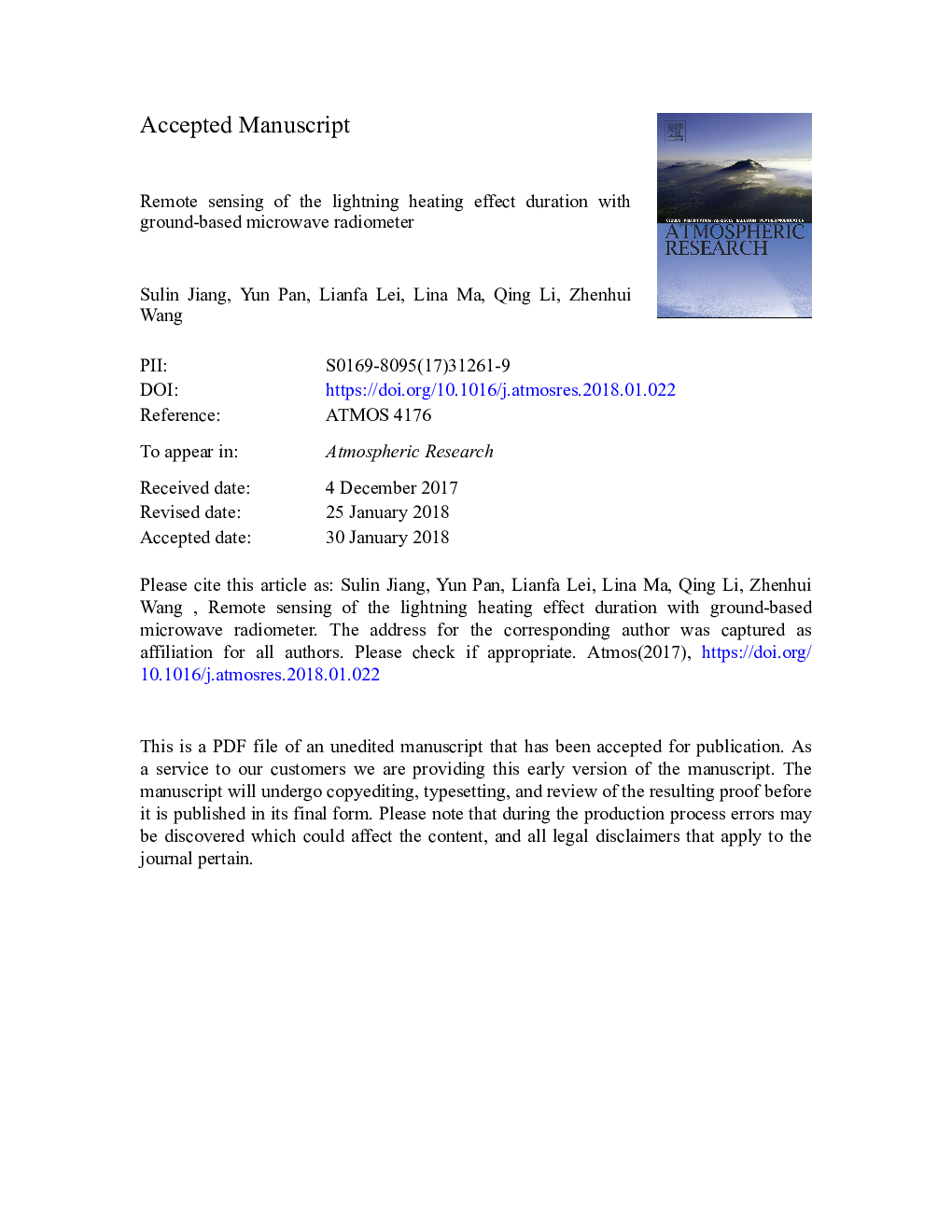| Article ID | Journal | Published Year | Pages | File Type |
|---|---|---|---|---|
| 8864695 | Atmospheric Research | 2018 | 29 Pages |
Abstract
Artificially triggered lightning events from May 26, 2017 to July 16, 2017 in Guangzhou Field Experiment Site for Lightning Research and Test (GFESL) were intentionally remotely sensed with a ground-based microwave radiometer for the first time in order to obtain the features of lightning heating effect. The microwave radiometer antenna was adjusted to point at a certain elevation angle towards the expected artificially triggered lightning discharging path. Eight of the 16 successfully artificially triggered lightning events were captured and the brightness temperature data at four frequencies in K and V bands were obtained. The results from data time series analysis show that artificially triggered lightning can make the radiometer generate brightness temperature pulses, and the amplitudes of these pulses are in the range of 2.0â¯K to 73.8â¯K. The brightness temperature pulses associated with 7 events can be used to estimate the duration of lightning heating effect through accounting the number of the pulses in the continuous pulse sequence and the sampling interval between four frequencies. The maximum duration of the lightning heating effect is 1.13â¯s, the minimum is 0.172â¯s, and the average is 0.63â¯s.
Related Topics
Physical Sciences and Engineering
Earth and Planetary Sciences
Atmospheric Science
Authors
Sulin Jiang, Yun Pan, Lianfa Lei, Lina Ma, Qing Li, Zhenhui Wang,
